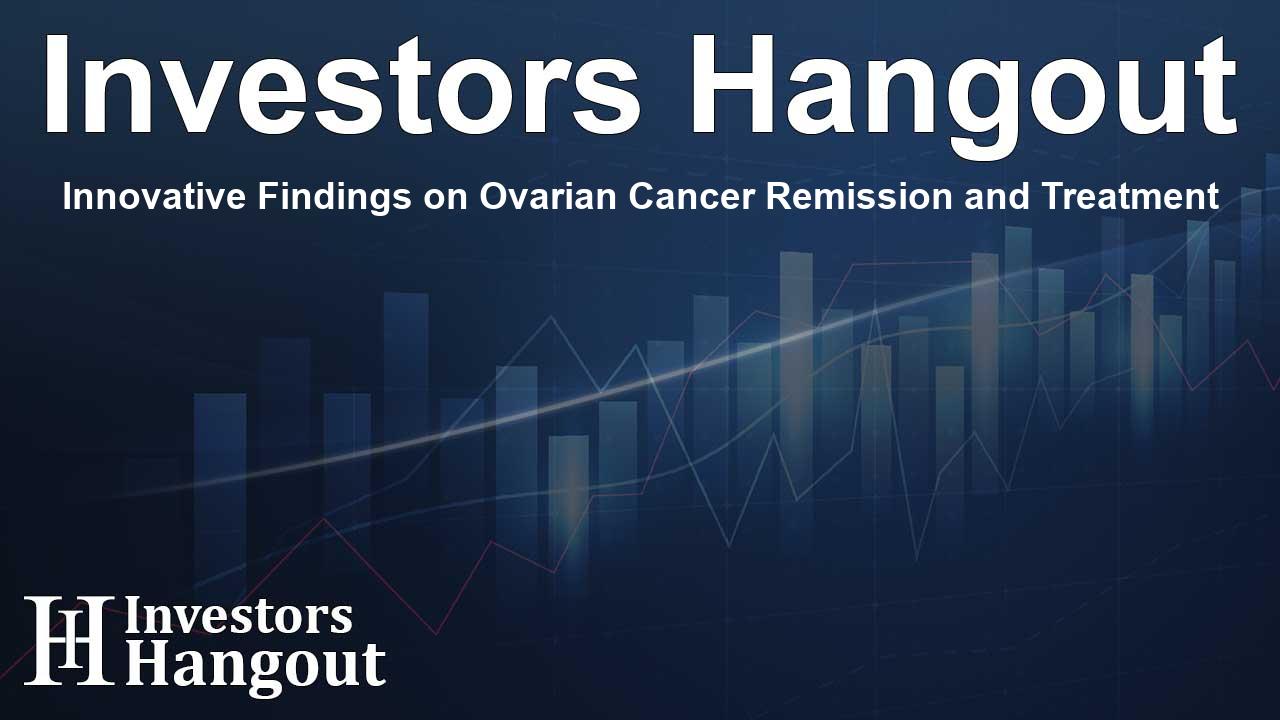Innovative Findings on Ovarian Cancer Remission and Treatment

Groundbreaking Research on Ovarian Cancer Remission
In a significant advancement in cancer research, a recent study highlights that nearly half of ovarian cancer patients in remission still contain hidden cancer cells. This groundbreaking research by Break Through Cancer TeamLab is reshaping our understanding of ovarian cancer and how it is treated.
Understanding the Challenges of Ovarian Cancer
Ovarian cancer is notorious for its high recurrence rates. For over forty years, survival statistics have shown little improvement due to the disease's tendency to return after treatment. Many patients initially respond well to surgery and chemotherapy, but in about 80% of cases, the cancer resurfaces. The study published in Clinical Cancer Research details vital insights that could change these dismal statistics.
Innovative Methodology Reveals Hidden Disease
The research led by Break Through Cancer utilized a minimally invasive technique known as 'second-look laparoscopy' (SLL) to investigate residual cancer cells after chemotherapy. Additionally, experimental blood tests measuring cancer cell DNA played a crucial role. Astonishingly, it was determined that 42% of the patients, who looked healthy on scans, still possessed minimal residual disease (MRD) that wouldn't be detected through traditional methods.
Key Findings from the Research
Dr. Amir Jazaeri, a key figure behind the research, emphasizes that conventional imaging techniques do not always reveal the true state of the disease. With SLL, previously hidden cancer cells were detected, facilitating a deeper understanding of treatment targets.
The MRD samples were analyzed with cutting-edge spatial transcriptomic and proteomic methods, identifying potential drug targets and highlighting crucial biological characteristics such as hypoxia signaling and immune evasion.
Promise of Circulating Tumor DNA
Furthermore, the researchers turned their attention to circulating tumor DNA (ctDNA). This breakthrough represents fragments of cancer DNA found in the bloodstream and serves as a novel detection tool for monitoring MRD. Initial results show promise in identifying high-risk patients and tracking disease evolution over time without requiring surgical intervention.
Future Directions and Ongoing Trials
This ongoing research is part of a broader mission to intercept residual ovarian cancer. An active trial, funded by Break Through Cancer, focuses on utilizing MRD as a primary marker in testing a new immunotherapy treatment.
Dr. Jazaeri points out two significant advantages of employing MRD detection methods. Firstly, it can quickly assess the effectiveness of treatment, expediting smaller clinical trials and facilitating faster access to innovative therapies. Secondly, exploring the biology of MRD can unveil ovarian cancer's vulnerabilities, fostering the development of more targeted and effective interventions.
Collaborative Efforts for Better Cancer Solutions
The findings from this study underscore the importance of collaborative research. Break Through Cancer aims to accelerate innovative approaches across various cancer types, including acute myeloid leukemia and ALK+ lung cancer. Such partnerships are crucial in creating effective strategies for tackling some of the hardest-to-manage cancers.
Tyler Jacks, PhD, President of Break Through Cancer, expresses enthusiasm for the transformative potential of this research. He asserts that these findings not only resolve long-standing scientific inquiries but also pave the way for smarter clinical trials aimed at preventing recurrence.
About Break Through Cancer
Established in 2021, Break Through Cancer focuses on uniting exceptional researchers and clinicians to combat some of the deadliest forms of cancer through facilitated collaboration among top cancer research institutions. These partnerships include notable entities like Dana-Farber Cancer Institute and Memorial Sloan Kettering Cancer Center. The organization operates on a foundation of substantial financial backing, which underscores its commitment to cancer research advancements.
Frequently Asked Questions
What did the research on ovarian cancer reveal?
The research identified that almost half of ovarian cancer patients in remission still harbor hidden cancer cells, challenging previous assumptions about remission.
What is 'second-look laparoscopy'?
'Second-look laparoscopy' is a minimally invasive surgical technique used to search for residual cancer cells after treatments like chemotherapy.
How does circulating tumor DNA help in monitoring cancer?
Circulating tumor DNA (ctDNA) can detect residual cancer without surgery, allowing for continuous monitoring of patients and detection of high-risk cases.
What are the future implications of these findings?
The findings suggest personalized treatment approaches could be developed using MRD detection, potentially leading to more effective therapies for ovarian cancer.
How does Break Through Cancer support cancer research?
Break Through Cancer promotes collaboration among leading cancer research institutions, pooling resources and expertise to accelerate the development of innovative cancer treatments.
About The Author
Contact Evelyn Baker privately here. Or send an email with ATTN: Evelyn Baker as the subject to contact@investorshangout.com.
About Investors Hangout
Investors Hangout is a leading online stock forum for financial discussion and learning, offering a wide range of free tools and resources. It draws in traders of all levels, who exchange market knowledge, investigate trading tactics, and keep an eye on industry developments in real time. Featuring financial articles, stock message boards, quotes, charts, company profiles, and live news updates. Through cooperative learning and a wealth of informational resources, it helps users from novices creating their first portfolios to experts honing their techniques. Join Investors Hangout today: https://investorshangout.com/
The content of this article is based on factual, publicly available information and does not represent legal, financial, or investment advice. Investors Hangout does not offer financial advice, and the author is not a licensed financial advisor. Consult a qualified advisor before making any financial or investment decisions based on this article. This article should not be considered advice to purchase, sell, or hold any securities or other investments. If any of the material provided here is inaccurate, please contact us for corrections.
